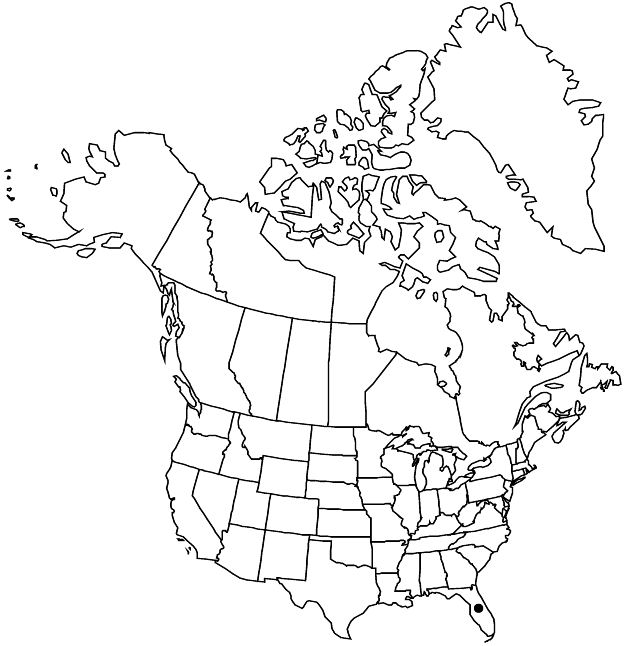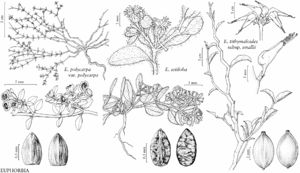Difference between revisions of "Euphorbia tithymaloides subsp. smallii"
Acta Bot. Mex. 65: 50. 2003.
imported>Volume Importer |
(No difference)
|
Latest revision as of 17:26, 29 July 2020
Shrubs. Stems 0.7–2 m. Leaves: stipules dark-brown, 0.5–0.6 × 0.5–0.6 mm; petiole 1.5–5 mm; blade usually elliptic to lanceovate, 25–70 × 13–32 mm, occasionally bractlike, 8–15 × 3.5–5 mm, base cuneate, apex acuminate, acute or narrowly obtuse, abaxial surface sparsely pilose-puberulent, adaxial surface glabrate or sparsely puberulent; midvein prominent, keeled or winged adaxially. Cyathia: peduncle 6–9 mm; bracts red or pink, oblong-lanceolate to oblong-ovate, 5–7 × 2–3 mm, apex acute or acuminate. Involucre red or pink, 8.5–12 mm; glands: medial slightly reniform, subquadrate to oblong, 0.8–1.2 × 0.7–0.8 mm, lateral irregularly ovate or oblong, 1–1.2 × 0.6–1 mm; appendages pink or red. Pistillate flowers: styles 5–6 mm. Seeds 3.3 × 2.7 mm, faintly keeled dorsally, base rounded, apex apiculate.
Phenology: Flowering and fruiting winter–early spring.
Habitat: Pinelands, hammocks.
Elevation: 0–10 m.
Distribution

Fla., West Indies (Cuba)
Discussion
Subspecies smallii is widely cultivated and was likely transported extensively by Spanish explorers very early but appears to be native to coastal areas of southern Florida and Matanzas in northern Cuba. Fieldwork suggests that several if not all Florida populations have apparently been extirpated due to development and human activity on Chokoloskee Island in the Florida Keys.
Selected References
None.
Lower Taxa
"connate" is not a number. "distinct" is not a number."connate" is not a number.
